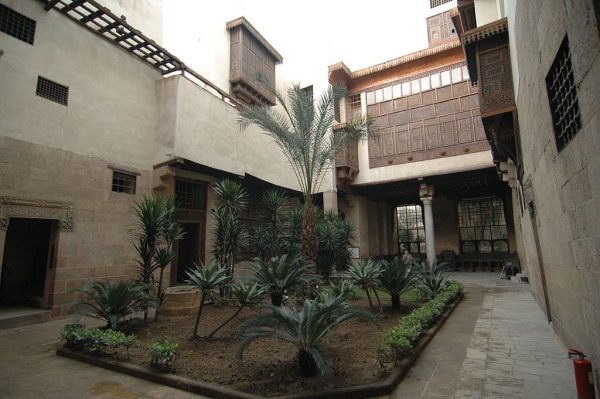Bayt Al-Suhaymi: The House of Suhaymi in Cairo
Bayt Al-Suhaymi: The House of Suhaymi in Cairo
Bayt Al-Suhaymi: The House of Suhaymi in Cairo
-
Hannah
-
Hannah

The name Bayt Al-Suhaymi translates to ‘House of Suhaymi’; the prestigious home was originally built back in 1648 and then expanded by the Sheikh Ahmed as-Suhaymi after he purchased it in 1796.
Today the house, restored in the 1990s, is open as a museum, and it’s a really beautiful example of Islamic architecture and décor, and one of the best preserved houses of its type in the city.

As was traditional, the house was divided into public open spaces for the men (salamlik) and private closed spaces for the family (haramlik) on the upper floor. Both included halls called qa’a, where you find some beautifully decorated high ceilings and tiled floors. The ‘blue hall’ is especially striking, with its blue porcelain tiles; here Al Suhaymi and his wife would relax and unwind in private.

On the second floor is the hammam, a bathroom with sauna. The coloured glass in the ceiling dome creates the effect of a stunning night sky – what a view to look upon while having a massage.

Bayt Al-Suhaymi is especially known for its fine mashrabiya windows, which protrude and are enclosed with latticework made from carved wood. The lattice filtered dust while allowing a cooling breeze into the house. It also afforded privacy for the women, who could look out of these windows onto the street or courtyard without being seen by those outside.

The inner courtyard, or sahn, is a typical feature of this style of house, and it’s dotted with shady trees.

Even the pavilion in the garden has a stunning design within its dome.

Outside, in the garden, you’ll also find the wooden gear of the waterwheel that once irrigated the garden and mill that would have been powered by a bull.
A visit to the Bayt Al-Suhaymi really does open a door to the past; it’s a treasure of Cairo.
I would love to visit!